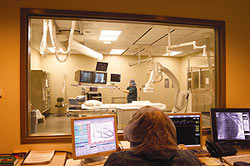In The McKinsey Quarterly
The provocative article below features ten trends to watch and is so good that I decided to feature the whole thing. I hope you don't mind but I am saving you the trouble of registering and possibly not being able to access the article due to its premium content status.
Ten trends to watch in 2006
Macroeconomic factors, environmental and social issues, and business and industry developments will all profoundly shape the corporate landscape in the coming years.
Ian Davis and Elizabeth Stephenson
Web exclusive, January 2006
Those who say that business success is all about execution are wrong. The right product markets, technology, and geography are critical components of long-term economic performance. Bad industries usually trump good management, however: in sectors such as banking, telecommunications, and technology, almost two-thirds of the organic growth of listed Western companies can be attributed to being in the right markets and geographies. Companies that ride the currents succeed; those that swim against them usually struggle. Identifying these currents and developing strategies to navigate them are vital to corporate success.
What are the currents that will make the world of 2015 a very different place to do business from the world of today? Predicting short-term changes or shocks is often a fool's errand. But forecasting long-term directional change is possible by identifying trends through an analysis of deep history rather than of the shallow past. Even the Internet took more than 30 years to become an overnight phenomenon.
Macroeconomic trends
We would highlight ten trends that will change the business landscape. First, we have identified three macroeconomic trends that will deeply transform the underlying global economy.
1. Centers of economic activity will shift profoundly, not just globally, but also regionally. As a consequence of economic liberalization, technological advances, capital market developments, and demographic shifts, the world has embarked on a massive realignment of economic activity. Although there will undoubtedly be shocks and setbacks, this realignment will persist. Today, Asia (excluding Japan) accounts for 13 percent of world GDP, while Western Europe accounts for more than 30 percent. Within the next 20 years the two will nearly converge. Some industries and functions—manufacturing and IT services, for example—will shift even more dramatically. The story is not simply the march to Asia. Shifts within regions are as significant as those occurring across regions. The United States will still account for the largest share of absolute economic growth in the next two decades.
Further reading:
China and India: The race to growth
Mapping the global capital markets
2. Public-sector activities will balloon, making productivity gains essential. The unprecedented aging of populations across the developed world will call for new levels of efficiency and creativity from the public sector. Without clear productivity gains, the pension and health care burden will drive taxes to stifling proportions.
Nor is the problem confined to the developed economies. Many emerging-market governments will have to decide what level of social services to provide to citizens who increasingly demand state-provided protections such as health care and retirement security. The adoption of proven private-sector approaches will likely become pervasive in the provision of social services in both the developed and the developing worlds.
Further reading:
The demographic deficit: How aging will reduce global wealth
Boosting government productivity
3. The consumer landscape will change and expand significantly. Almost a billion new consumers will enter the global marketplace in the next decade as economic growth in emerging markets pushes them beyond the threshold level of $5,000 in annual household income—a point when people generally begin to spend on discretionary goods. From now to 2015, the consumer's spending power in emerging economies will increase from $4 trillion to more than $9 trillion—nearly the current spending power of Western Europe.
Shifts within consumer segments in developed economies will also be profound. Populations are not only aging, of course, but changing in other ways too: for example, by 2015 the Hispanic population in the United States will have spending power equivalent to that of 60 percent of all Chinese consumers. And consumers, wherever they live, will increasingly have information about and access to the same products and brands.
Further reading:
Premium marketing to the masses: An interview with LG Electronics India's managing director
New strategies for consumer goods
Social and environmental trends
Next, we have identified four social and environmental trends. Although they are less predictable and their impact on the business world is less certain, they will fundamentally change how we live and work.
4. Technological connectivity will transform the way people live and interact. The technology revolution has been just that. Yet we are at the early, not mature, stage of this revolution. Individuals, public sectors, and businesses are learning how to make the best use of IT in designing processes and in developing and accessing knowledge. New developments in fields such as biotechnology, laser technology, and nanotechnology are moving well beyond the realm of products and services.
More transformational than technology itself is the shift in behavior that it enables. We work not just globally but also instantaneously. We are forming communities and relationships in new ways (indeed, 12 percent of US newlyweds last year met online). More than two billion people now use cell phones. We send nine trillion e-mails a year. We do a billion Google searches a day, more than half in languages other than English. For perhaps the first time in history, geography is not the primary constraint on the limits of social and economic organization.
Further reading:
The next revolution in interactions
The McKinsey Global Survey of Business Executives, July 2005
5. The battlefield for talent will shift. Ongoing shifts in labor and talent will be far more profound than the widely observed migration of jobs to low-wage countries. The shift to knowledge-intensive industries highlights the importance and scarcity of well-trained talent. The increasing integration of global labor markets, however, is opening up vast new talent sources. The 33 million university-educated young professionals in developing countries is more than double the number in developed ones. For many companies and governments, global labor and talent strategies will become as important as global sourcing and manufacturing strategies.
Further reading:
China's looming talent shortage
Sizing the emerging global labor market
6. The role and behavior of big business will come under increasingly sharp scrutiny. As businesses expand their global reach, and as the economic demands on the environment intensify, the level of societal suspicion about big business is likely to increase. The tenets of current global business ideology—for example, shareholder value, free trade, intellectual-property rights, and profit repatriation—are not understood, let alone accepted, in many parts of the world. Scandals and environmental mishaps seem as inevitable as the likelihood that these incidents will be subsequently blown out of proportion, thereby fueling resentment and creating a political and regulatory backlash. This trend is not just of the past 5 years but of the past 250 years. The increasing pace and extent of global business, and the emergence of truly giant global corporations, will exacerbate the pressures over the next 10 years.
Business, particularly big business, will never be loved. It can, however, be more appreciated. Business leaders need to argue and demonstrate more forcefully the intellectual, social, and economic case for business in society and the massive contributions business makes to social welfare.
Further reading:
What is the business of business?
The role of regulation in strategy
7. Demand for natural resources will grow, as will the strain on the environment. As economic growth accelerates—particularly in emerging markets—we are using natural resources at unprecedented rates. Oil demand is projected to grow by 50 percent in the next two decades, and without large new discoveries or radical innovations supply is unlikely to keep up. We are seeing similar surges in demand across a broad range of commodities. In China, for example, demand for copper, steel, and aluminum has nearly tripled in the past decade.
The world's resources are increasingly constrained. Water shortages will be the key constraint to growth in many countries. And one of our scarcest natural resources—the atmosphere—will require dramatic shifts in human behavior to keep it from being depleted further. Innovation in technology, regulation, and the use of resources will be central to creating a world that can both drive robust economic growth and sustain environmental demands.
Further reading:
Preparing for a low-carbon future
What's next for Big Oil?
Business and industry trends
Finally, we have identified a third set of trends: business and industry trends, which are driving change at the company level.
8. New global industry structures are emerging. In response to changing market regulation and the advent of new technologies, nontraditional business models are flourishing, often coexisting in the same market and sector space.
In many industries, a barbell-like structure is appearing, with a few giants on top, a narrow middle, and then a flourish of smaller, fast-moving players on the bottom. Similarly, corporate borders are becoming blurrier as interlinked "ecosystems" of suppliers, producers, and customers emerge. Even basic structural assumptions are being upended: for example, the emergence of robust private equity financing is changing corporate ownership, life cycles, and performance expectations. Winning companies, using efficiencies gained by new structural possibilities, will capitalize on these transformations.
Further reading:
Strategy in an era of global giants
Loosening up: How process networks unlock the power of specialization
9. Management will go from art to science. Bigger, more complex companies demand new tools to run and manage them. Indeed, improved technology and statistical-control tools have given rise to new management approaches that make even mega-institutions viable.
Long gone is the day of the "gut instinct" management style. Today's business leaders are adopting algorithmic decision-making techniques and using highly sophisticated software to run their organizations. Scientific management is moving from a skill that creates competitive advantage to an ante that gives companies the right to play the game.
Further reading:
Do you know who your experts are?
Matching people and jobs
10. Ubiquitous access to information is changing the economics of knowledge. Knowledge is increasingly available and, at the same time, increasingly specialized. The most obvious manifestation of this trend is the rise of search engines (such as Google), which make an almost infinite amount of information available instantaneously. Access to knowledge has become almost universal. Yet the transformation is much more profound than simply broad access.
New models of knowledge production, access, distribution, and ownership are emerging. We are seeing the rise of open-source approaches to knowledge development as communities, not individuals, become responsible for innovations. Knowledge production itself is growing: worldwide patent applications, for example, rose from 1990 to 2004 at a rate of 20 percent annually. Companies will need to learn how to leverage this new knowledge universe—or risk drowning in a flood of too much information.
Further reading:
The 21st-century organization
Making a market in knowledge
Companies need to understand the implications of these trends alongside customer needs and competitive developments. Executives who align their company's strategy with these factors will be the best placed to succeed. Reflecting on these trends will be time well spent.
About the Authors
Ian Davis is worldwide managing director of McKinsey & Company and Elizabeth Stephenson is a consultant in McKinsey's San Francisco office. A shorter version of this article was published in the Financial Times on January 13, 2006.
The article can be found
here but requires registration.





